Kenzō Tange's Prehistoric Metabolism
“Tradition can, to be sure, participate in a creation, but it can no longer be creative itself.”
--Kenzo Tange
The problem with writing an article on Kenzō Tange is not what to include but what to leave out. So much has been written on the Pritzker prize-winning architect that the reams of paper upon which they’ve been printed could quite possibly fill every square inch of the dozens of buildings he has designed.
I suppose I could start with a theme of Kenzō and me. I first became familiar with the catchy sound of his name due to his work with one of my favorite Japanese filmmakers, Hiroshi Teshigahara, director of "Woman in the Dunes." In the late 1970s, Teshigahara was on hiatus from filmmaking, dedicating more of his time to helping run the Sōgetsu school of ikebana, which his father, Sōfu, had founded. It was at this time that Tange designed the headquarters of the school, which at first glance appears to be two single sheets of blue glass, mirroring the sky.
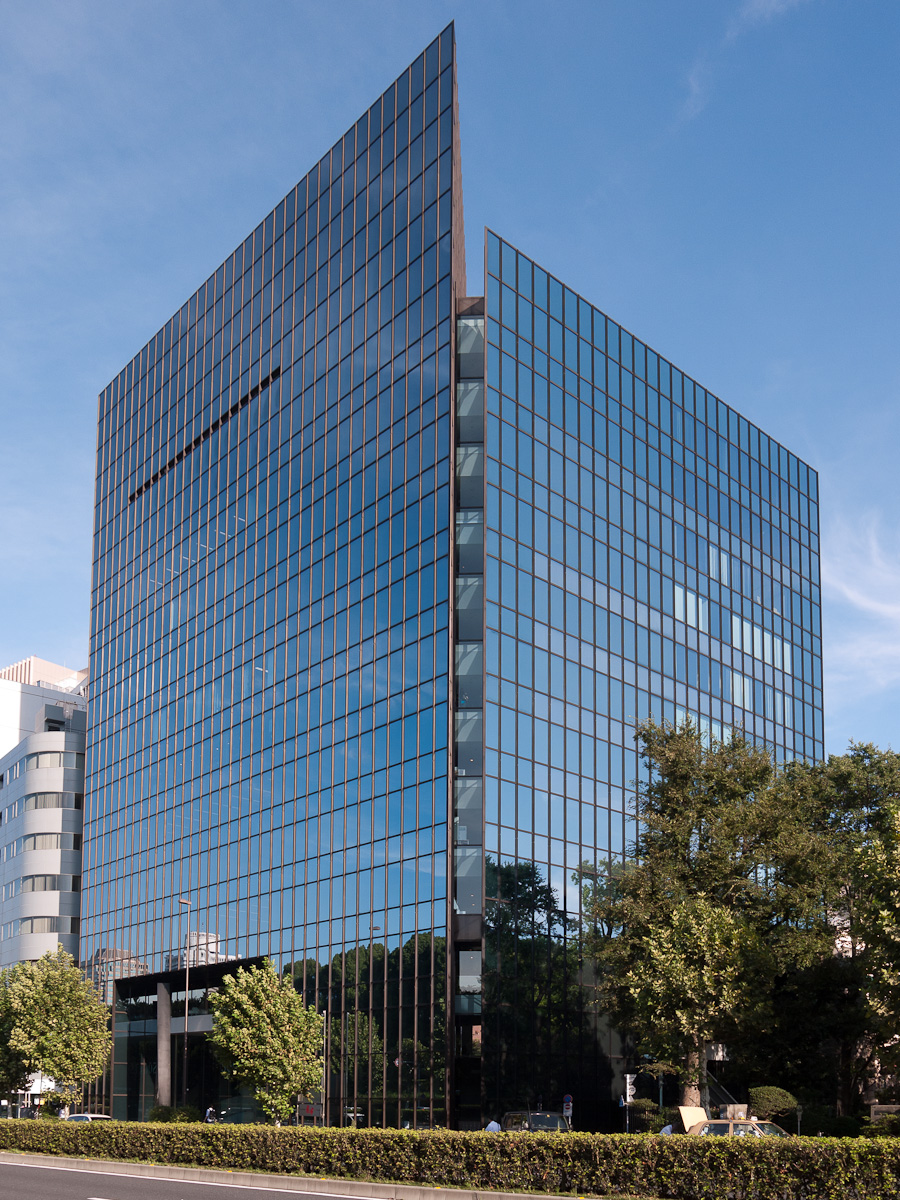
Sogetsu Kaikan Akasaku; picture by Rs1421 (CC BY-SA 3.0)
This verticality is an important motif in Tange’s career, which commenced at a time when Japan was literally raising itself out of the ashes of war. Two of his closest friends were Sōfu and the artist Isamu Noguchi, who along with others of their generation felt an energetic duty to help rebuild their nation. Noguchi had just returned from a long period abroad, and caused some controversy by insisting that artists look to their own traditions rather than merely emulating the west.
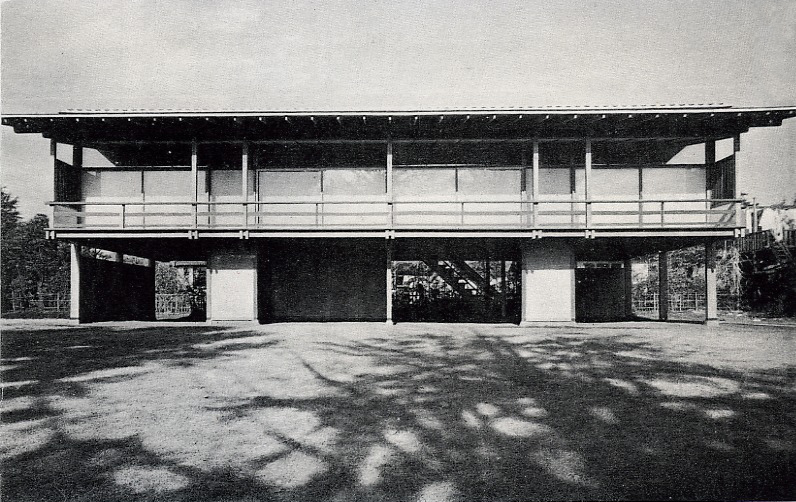
The minimalist exterior design of Kenzo Tange's own home which he built in 1953; picture Public Domain
Tange discovered this sentiment for himself in 1953 when he was invited to attend the reconstruction of the Ise Shrine. This grandest of Shinto shrines is traditionally rebuilt every twenty years, and that particular year coincided with the end of the American occupation. This experience led to a book on Ise, in which Tange writes, “I hold the view that there have been two major strains within Japanese culture, the Jōmon (14,000 – 300 BC) and the Yayoi (300 BC – 300 AD), the vital and the aesthetic, and that their cultural development has been the history of their interplay.”
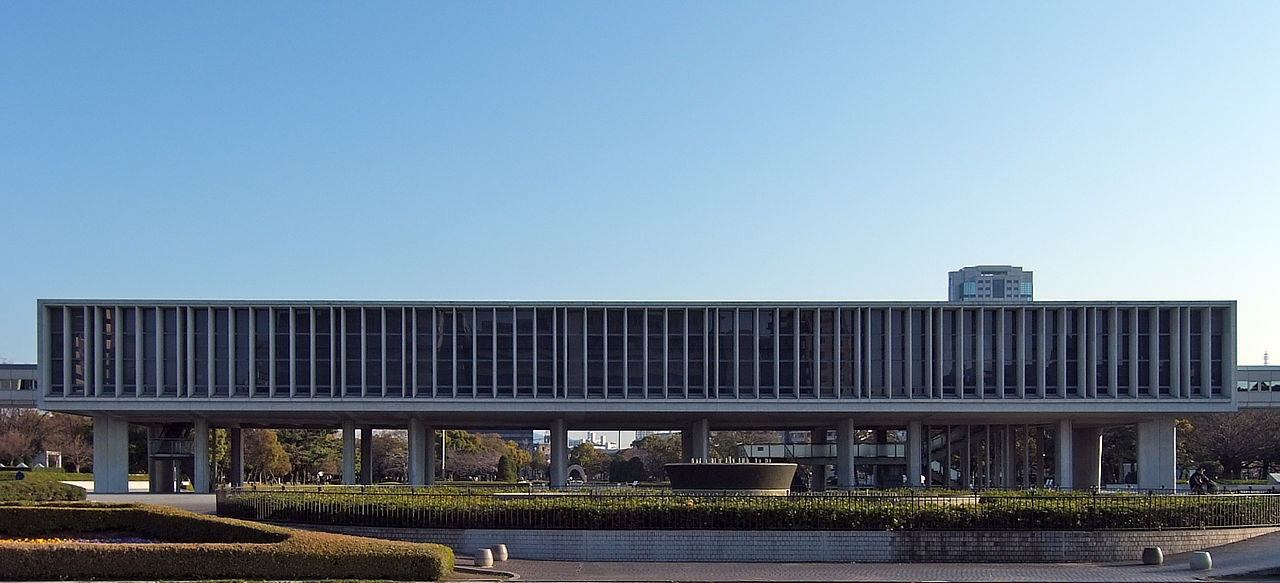
Hiroshima Peace Memorial Museum; picture by CC BY-SA 3.0
Art critic Dore Ashton writes that Tange, Sōfu, and Noguchi tended to favor the Jōmon over the Yayoi, as a means “to free themselves from the great body of laws that had encumbered one side of Japanese art history and to reinstate an alternative tradition that had always been present from prehistoric times.” The 1950s proved a fertile time for this, as wartime laws and norms had broken down, as had the bombed-out physical forms of the cities themselves.
Jōmon architecture can best be characterized by the series of wooden beams which help lift the structure above the earth and the rushing water ever-present in Japan’s sub-tropical climate. Tange replicated this lift (albeit in concrete) as he rebuilt a number of the country’s city and prefectural halls, most notably those of Kurashiki and Kagawa. This reached its apotheosis in his being selected to redesign the city of Hiroshima in 1949.
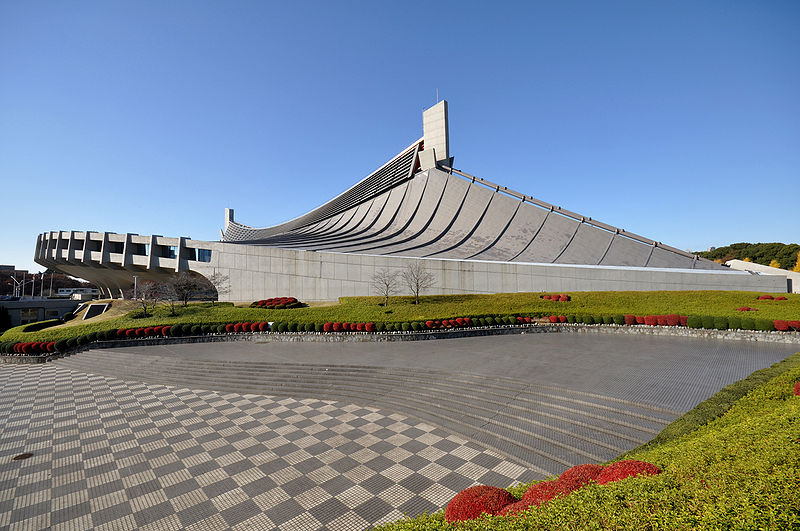
Yoyogi National Gymnasium; picture by kanegen (CC BY 2.0)
One of Tange’s most renowned structures is the Yoyogi National Gymnasium, cited by the Pritzker Prize jury as being among the most beautiful buildings of the 20th Century. Designed for the 1964 Tokyo Olympics, Tange took inspiration from a different set of classic lines, that of the Coliseum in Rome. An earlier fusion of the Roman and Shinto influences had been in his entry for the design competition for the Greater East Asia Co-Prosperity Sphere Memorial Hall, which Tange won in 1942. While never built, the hall would have rested at the foot of Mount Fuji. Fuji’s own unique form can be viewed from the observation deck of the 1991 Tokyo Metropolitan Government Building, one of his last Tokyo monuments before shifting his focus to a rapidly growing Asia. After Tange’s death in 2005, his Harvard-educated son Paul continued his father’s vision, most notably the gherkin-like Mode Gakuen Cocoon Tower in Shinjuku.
To architects themselves, perhaps Tange’s greatest legacy was his participation in the Metabolist movement. Founded at the 1960 World Design Conference in Tokyo, Metabolism proposed a structural reorganization of Tokyo itself, into a single megastructure that could provide for a population of 10 million. At the heart of Metabolism is the concept of growth and change, the city as undergoing an organic process. While few of the Metabolist ideas were carried to fruition, some of its principles were seen in the reconstruction of Skopje, Yugoslavia after that city’s 1963 earthquake. The movement culminated in the 1970 Osaka Expo, before the oil shock of a few years later shifted architecture’s focus back toward smaller, more modest projects.
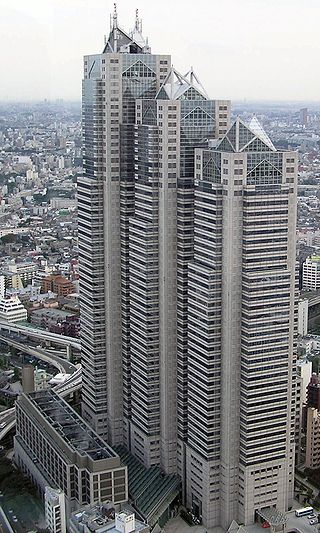
Shinjuku Park Tower; picture by Morio (CC BY-SA 3.0)
By the 1980s, Tange had moved away from his columns of concrete and was working more in aluminum and glass, as best seen the aforementioned Sōgetsu headquarters. And while perhaps his most visited structure, the Hiroshima Peace Memorial Museum, represents his former Jōmon influence, his most widely seen structure must surely be the Shinjuku Park Tower, immortalized in Sofia Coppola's film, Lost in Translation.
While my own personal beliefs respect the idea of an "organic" form of urban development a la the Jōmon, I equally bemoan the lack of Yayoi-like preservation laws to protect some of those structures. Though I suppose if seen from the example of the Ise Shrines, there are few things as organic as destruction and rebirth.
Edward J. Taylor is a writer and editor based in Kyoto, Japan. Previously he has written for ZenVita on the architetcure Kengo Kuma and Shigeru Ban.
For more innovative designs from Japanese architects visit the ZenVita Projects page. ZenVita offers FREE advice and consultation with some of Japan's top architects and landscape designers on all your interior design or garden upgrade needs. If you need help with your own home improvement project, contact us directly for personalized assistance and further information on our services: Get in touch.
SEARCH
Recent blog posts
- November 16, 2017Akitoshi Ukai and the Geometry of Pragmatism
- October 08, 2017Ikebana: The Japanese “Way of the Flower”
- September 29, 2017Dai Nagasaka and the Comforts of Home
- September 10, 2017An Interview with Kaz Shigemitsu the Founder of ZenVita
- June 25, 2017Takeshi Hosaka and the Permeability of Landscape
get notified
about new articles
Join thousand of architectural lovers that are passionate about Japanese architecture